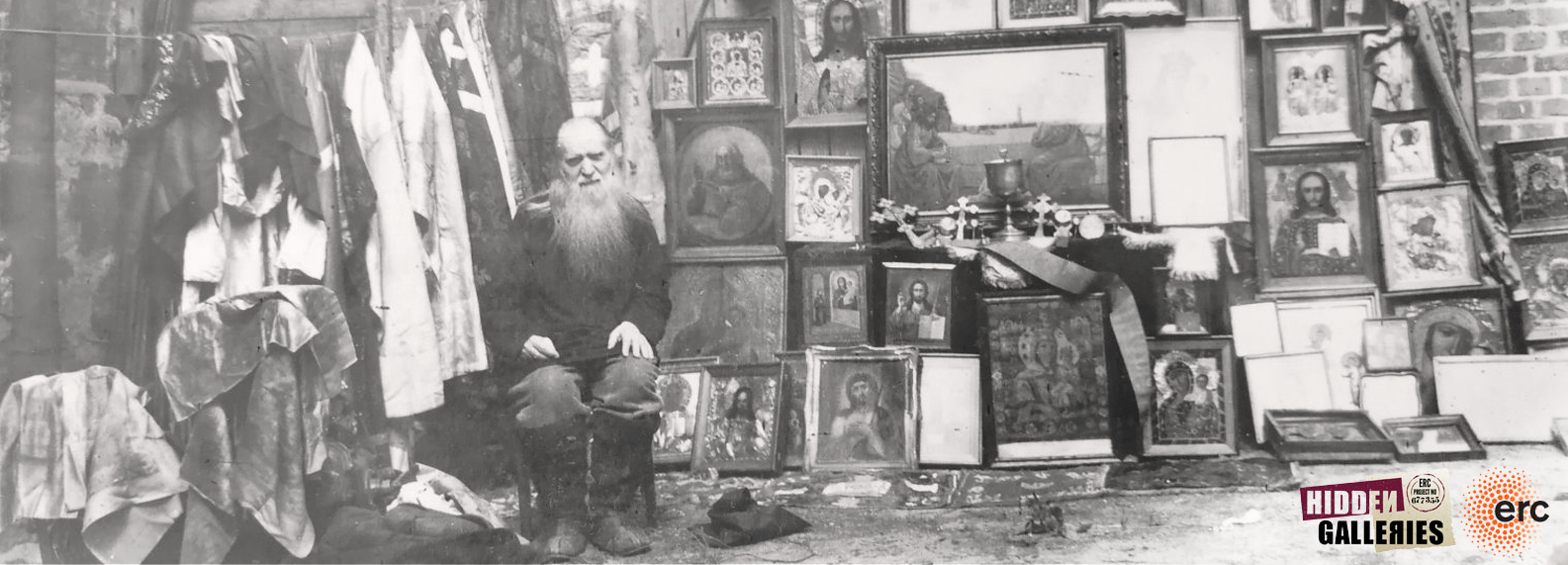True Orthodox Church
Item set
Title
True Orthodox Church
Description
The Russian True Orthodox Church (TOC), also known as the Catacomb Church, was an umbrella term used to refer to various Orthodox communities that separated from the official Russian Orthodox Church structures in the early Soviet period and went underground. The split happened when many Orthodox communities refused to accept the infamous Declaration of Loyalty to Soviet power signed by the Metropolitan Sergii in 1927 and consequently broke with the Moscow Patriarchy. Many of the religious groups and popular movements who became part of the True Orthodox Church, however, had emerged well before the Revolution, hence, they were not formed as the direct consequence of the split. Moreover, as some historians argue, even among the communities called the True Orthodox Church not all of them rejected Sergii’s Declaration and some remained loyal to the Moscow Patriarchate. Many chose (or were forced) into an illegal underground position simply because it was impossible to comply with Soviet registration procedures and requirements for religious communities and groups (Pospielovsky 1995:174-175; Beglov 2008).
Throughout the entire Soviet period, the True Orthodox Church was a target of the Soviet authorities’ repressive policies as the movement was denied official recognition and was considered a politically subversive religious organization. Soviet secret police ran multiple operation against TOC communities, their underground monasteries and churches.
For further readings see:
Beglov, Aleksei. 2008. V poiskakh “bezgreshnykh katakomb”. Tserkovnoe podpol’e v SSSR. Moscow: “Arefa”.
Demianov, A.I. 1977. Istinno-pravoslavnoe khristianstvo. Kritika ideologii I deatel’nosti. Voronezh: Izdatel’stvo Voronezhskogo universiteta.
E. L.[ Lopushanskaia]. 1971. Episkopy ispovedniki. San Francisco.
Pospielovsky, D.V. 1995. Russkaia pravoslavnaia tserkov’ v XX veke. Moscow: Respublika.
Wynot, Jennifer Jean. 2004. Keeping the faith : Russian orthodox monasticism in the Soviet Union, 1917-1939. Texas A&M University Press.
Throughout the entire Soviet period, the True Orthodox Church was a target of the Soviet authorities’ repressive policies as the movement was denied official recognition and was considered a politically subversive religious organization. Soviet secret police ran multiple operation against TOC communities, their underground monasteries and churches.
For further readings see:
Beglov, Aleksei. 2008. V poiskakh “bezgreshnykh katakomb”. Tserkovnoe podpol’e v SSSR. Moscow: “Arefa”.
Demianov, A.I. 1977. Istinno-pravoslavnoe khristianstvo. Kritika ideologii I deatel’nosti. Voronezh: Izdatel’stvo Voronezhskogo universiteta.
E. L.[ Lopushanskaia]. 1971. Episkopy ispovedniki. San Francisco.
Pospielovsky, D.V. 1995. Russkaia pravoslavnaia tserkov’ v XX veke. Moscow: Respublika.
Wynot, Jennifer Jean. 2004. Keeping the faith : Russian orthodox monasticism in the Soviet Union, 1917-1939. Texas A&M University Press.
Creator
Tatiana Vagramenko
Publisher
This project has received funding from the European Research Council (ERC) under the European Union’s Horizon 2020 research and innovation programme No . 677355
Bibliographic Citation
Date Created
2018
Items
-
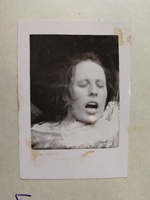
Resistance by Image: Arrest Photographs of True Orthodox believers, Ukraine 1952
These arrest photographs come from a 1952 secret police penal file on a group of 23 believers who were arrested in the Kiev region of Ukraine. The file contains two versions of their arrest photographs taken by the MGB officers. As the photos were being taken, the believers intentionally closed their eyes, turned their heads away, or sang while the officers tried to restrain them. Their gloved hands are clearly visible in the images. Police officers later tried to correct these “tainted” photographs by removing the evidence of their violent intervention from the prints, which one can see in th -
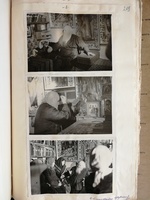
Secret police photographs of Ioannite community Ukraine
The photographs come from a 1959 KGB criminal case against three members of an Ioannite community in Cherkasy region, Ukraine. The images were designed as a photo album pasted into the secret police file. They portray father Mitrofan, the priest of the community in his house, which had been turned into a clandestine chapel. The first photo collage shows father Mitrofan dressed in Orthodox vestments against a background of icons, performing a religious service and talking to women, seemingly his followers. The second photo collage records the ritual washing of feet, also performed in father Mit -
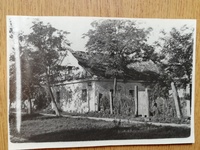
True Orthodox secret monasticism Ukraine
These photographs were taken during a raid on an underground monastery by the Soviet secret police, the NKGB in 1945. The images provide visual representations of a vernacular subterranean architecture developed by True Orthodox Christian communities in Soviet-era Ukraine. The monastery was located in the underground vault dug out under a private house (see the first image) in the small town of Chuguev, near Kharkov, northeast Ukraine. The twenty two photographs enclosed in the secret police file give a detailed description of the underground construction. Images 2 and 3 depicts two entries to -
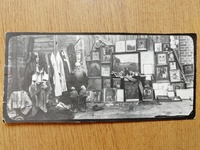
Crime scene photographs True Orthodox Church Ukraine
In 1945, the police raided an underground monastery of True Orthodox Christians (TOC). It was located in a vault under a private house in the town of Chuguev, near Kharkov, Ukraine. As a result, nine believers (most of them nuns and monks) were arrested with hieromonk Seraphim (Shevtsov) amongst them. All religious artefacts belonging to the community were confiscated and most of them were later destroyed. The photographs presented in this entry were taken during the raid and were later attached to a NKGB criminal file as incriminating evidence. The images portray confiscated church property -
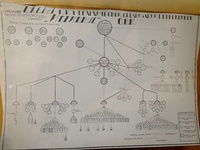
Model religious network schemes Soviet Union
These two images come from two exemplary closing indictments against the so-called "ecclesiastic-monarchist, counter-revolutionary organisation", the True Orthodox Church. They were published as top secret brochures by the Soviet secret police (OGPU) in 1931. Network schemes were carefully and precisely designed and printed using very advanced photo-printing technology for the time. Through complex sets of social links, the schemes represent religious communities as centralised insurgent political organisations. At the very bottom are “local (rural) cells” (sel’skie iacheiki) – basic relig -
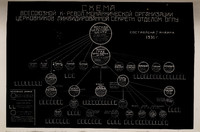
True Orthodox Church secret police network scheme Ukraine
This scheme of a religious network was produced as part of a review of criminal cases against believers of the True Orthodox Church. It was published in 1931 as a top-secret document by the Soviet secret police (OGPU) in Moscow. This image has been given the title "Scheme of the All-Union Counter-Revolutionary Monarchist Organisation of Churchmen (the 'True Orthodox Church'), liquidated by the Secret Political Department OGPU". Schemes such as this one were designed to represent the religious movement as an organised hierarchical structure, where the "ecclesiastical political centre" in Mosco -
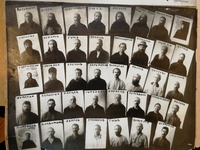
Photo-collage and network scheme True Orthodox believers Russia
This photo-collage and scheme of a religious network were produced as part of an exemplary collective penal case against members of the catacomb True-Orthodox Church. The photo-collage shows a group of believers put on trial - thirty eight True Orthodox believers headed by Alexii Bui, bishop of the Voronezh diocese (top row, fourth from the left). The network scheme represents the movement as a centralised organisation, uniting religious centres in Leningrad and Moscow with numerous "cells" (as the OGPU called them) in southern regions of Russia (Voronezh, Belgorod, Kursk, etc). It shows repre -
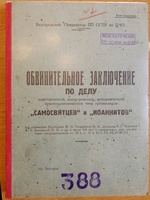
Secret police instructional publication on Russian Orthodox clandestine groups
The images are a photo-collage and scheme of a “liquidated” religious network produced as part of a closing indictment in a collective penal case against one hundred believers, followers of underground popular Orthodox movements, referred to as the Samosviatsy and the Ioannits. The group on trial were monks and nuns from closed Orthodox monasteries and ordinary believers from the Ukrainian and Russian countryside. They rejected both Soviet power and the Russian Orthodox Church authority as they believed the Orthodox Church was compromised by collaboration with the Bolsheviks. The network, whic
